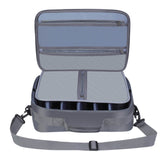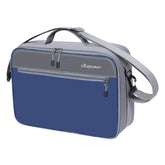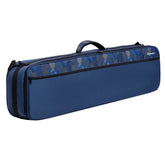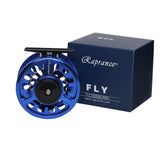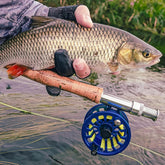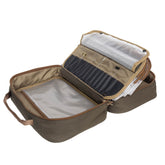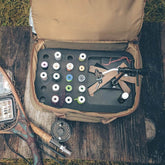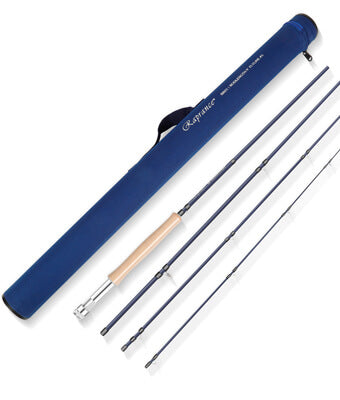Fly Rod and Reel: Comprehensive Guide to Top Kits Like Redington and Cabela’s
When it comes to the world of fly fishing, the right gear can make all the difference in your experience and success on the water. A quality fly rod and reel kit is essential for any angler, whether you are just starting out or looking to upgrade your equipment. With options like the Redington fly rod kit and the Cabela’s fly fishing kit, I can easily find setups that cater to various skill levels and budget considerations.

Fiberglass fly rod kits have gained popularity for their unique benefits, offering a softer action that many anglers find enjoyable. They provide a charming blend of nostalgia and performance that can enhance the fly fishing experience. As I explore the nuances of each kit, I appreciate how they contribute to my overall enjoyment of the sport and the moments spent on the water.
Essentials of Fly Rod and Reel Kits
In choosing a fly rod and reel kit, it’s crucial to understand the components of the kit, the selection of the rod, and the ideal reel for your needs. Each element plays a vital role in your fly fishing experience and can significantly influence your success.
Components of a Fly Fishing Rod and Reel Kit
A well-rounded fly fishing kit typically includes a fly rod, a fly reel, a line, and backing. The fly rod’s flexibility can affect casting distance and accuracy. The reel, designed to hold the line, should balance well with the rod for optimal performance.
Fly rods come in various lengths and weights, impacting their usage for different fish species and water conditions. The fly line is crucial; weight-forward lines are often preferred for beginners due to their ease of casting. Backing, though unseen, is essential for preventing the line from slipping off the reel during a fight with a large fish.
Selecting the Right Fly Rod
When selecting a fly rod, I consider the rod length and weight, as they determine the casting distance and the species targeted. For example, a 9-foot, 5-weight rod is versatile for trout, accommodating a range of techniques and fly sizes.
Material is also important; graphite rods are lightweight and sensitive, while fiberglass rods offer better flex, making them more forgiving for beginners. If I plan to fish in tight spaces, shorter rods can increase accuracy in casts. Understanding the action—slow, medium, or fast—is key; it influences how the rod performs under load.
Choosing a Suitable Fly Reel
The fly reel must correspond to the rod to maintain proper balance. I often select a reel that matches the rod's weight. A 5-weight rod typically pairs well with a 5-weight reel to ensure efficiency in retrieving line and handling fish.
Reel construction can affect durability and weight. A smooth drag system is vital for managing strong fighters, while a sealed drag prevents environmental factors from affecting performance. I also prioritize a reel that allows for easy line retrieval, facilitating quick adjustments while fishing.
Materials and Construction
Understanding the materials and construction of fly rods is essential for assessing their performance and durability. The choice of materials significantly impacts casting ability, sensitivity, and overall user experience.
Analyzing Fly Rod Materials
When selecting a fly rod, I consider the materials used in its construction. Common materials include graphite, fiberglass, and bamboo.
-
Graphite: Lightweight and sensitive, graphite rods offer excellent performance for most fly fishing scenarios. They provide quick recovery, allowing for precise casting.
-
Fiberglass: Known for its durability and smooth casting, fiberglass rods are ideal for beginners. They are heavier than graphite but provide a unique, slow action that some anglers prefer.
-
Bamboo: This traditional material offers a classic feel and great action, but it requires more maintenance. It's less common today but still appreciated for its aesthetics and history.
The right material depends on my fishing style and environment.
Fiberglass Fly Rod Kit Advantages
Using a fiberglass fly rod kit has several benefits that appeal to different anglers.
-
Durability: Fiberglass rods resist breaking under stress, making them excellent for beginners and rugged conditions.
-
Cost-Effective: Many fiberglass kits are affordable, providing great value without sacrificing quality.
-
Smooth Casting: The slower action of fiberglass rods helps me feel the line more effectively, enhancing control during casting.
-
Sensitivity to Fish: While they may not be as responsive as graphite, fiberglass rods offer enough sensitivity to detect bites, which is crucial for success.
These advantages make fiberglass kits a practical choice for various fishing situations.
Top Fly Rod Kits on the Market
When exploring fly rod kits, I find that quality, performance, and versatility are crucial factors. Two notable options are the Redington Fly Rod Kit and Cabela’s Fly Fishing Kit, each offering unique features tailored to different fishing needs.
Redington Fly Rod Kit Features
The Redington Fly Rod Kit stands out for its balance of performance and affordability. The kit includes a medium-fast action rod, which allows for both precision casting and the ability to handle various fishing conditions.
Key features include:
- Rod Length: Available in multiple lengths, often 9 feet, suitable for various water types.
- Material: Constructed from durable materials ensuring longevity and resistance to wear.
- Reel: The included reel is smooth and equipped with a reliable drag system.
- Line: The kit often comes pre-spooled with quality fly line, which simplifies setup for beginners.
This kit is a solid choice for novice and intermediate anglers alike, providing the necessary tools for an enjoyable experience.
Cabela’s Fly Fishing Kit Overview
Cabela’s Fly Fishing Kit offers a comprehensive package that caters to anglers seeking a robust, user-friendly setup. It typically features a graphite rod, known for its strength and sensitivity.
Noteworthy elements include:
- Rod Action: Designed to provide quick, responsive action for effective casting.
- Included Accessories: The kit usually comes with essential gear, such as flies, tippet, and a carrying case, making it a great all-in-one solution.
- Versatile Usage: Suitable for various fishing scenarios, from freshwater to light saltwater.
Cabela’s kit often appeals to beginner and seasoned anglers, ensuring they have reliable equipment for a successful day on the water.
Best Practices for Fly Fishing

When I fly fish, my focus is always on refining my techniques to match the environment. Each setting—whether it’s rivers, ponds, or lakes—requires a tailored approach to maximize success.
Techniques for Rivers and Streams
In rivers and streams, I pay close attention to the current. I position myself downstream of my target area to cast upstream, allowing the fly to drift naturally back to me.
Key points to remember:
- Observation: Look for feeding fish and insect activity.
- Casting Techniques: Use short, precise casts to avoid disturbing the water.
- Strike Indicators: Incorporate these to detect subtle takes.
Selecting the right fly is crucial, often matching the local insect hatch. I vary my retrieve speed and depth, adjusting based on fish behavior.
Effective Fly Fishing in Ponds and Lakes
Fishing in still waters like ponds and lakes presents unique challenges. In these environments, I focus on understanding fish feeding patterns and depths.
Useful tactics include:
- Finding Structure: I seek out submerged objects or vegetation where fish are likely to hide.
- Long Casts: I often utilize longer casts to reach feeding areas without spooking fish.
- Floating and Sinking Lines: I select lines based on the depth where fish are located.
I also keep a variety of flies ready, adapting to changes in weather and water conditions.
Mastering the Nymph Technique
The nymph technique is critical to my success, especially in rivers. I often fish below the surface, where many fish feed.
For effective nymphing, I focus on:
- Leader Setup: I use a longer leader for better presentation.
- Depth Control: Adjusting weight can help me get my nymph to the right depth quickly.
- Detecting Takes: I stay vigilant for subtle changes in my line.
Selecting the right nymph pattern is essential. I often experiment with sizes and colors to see what fish prefer, adapting as needed throughout my fishing session.

